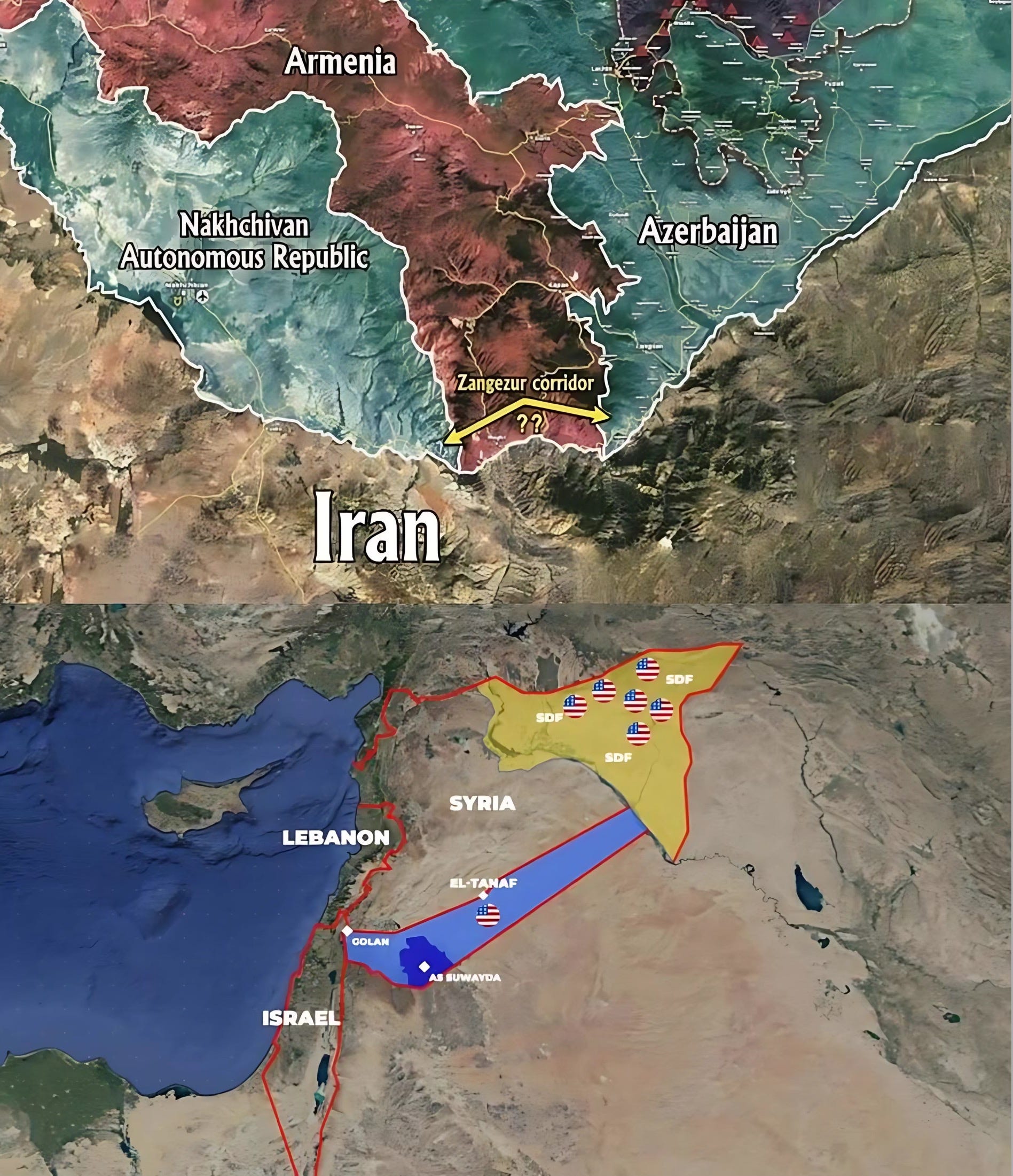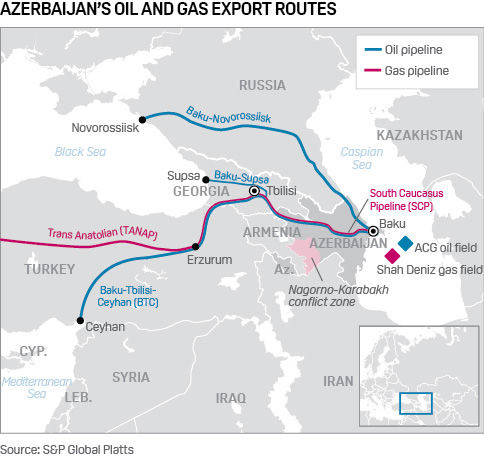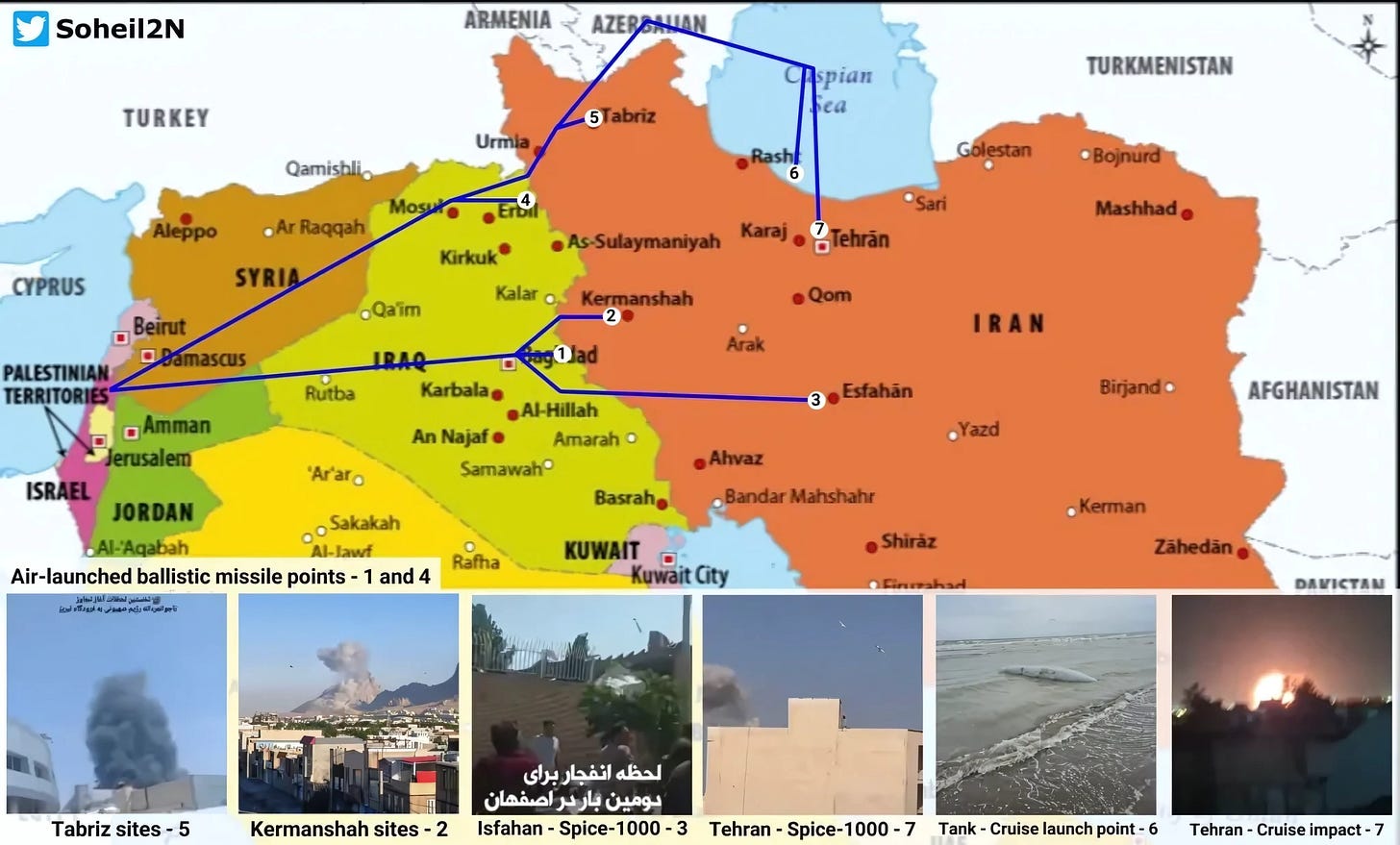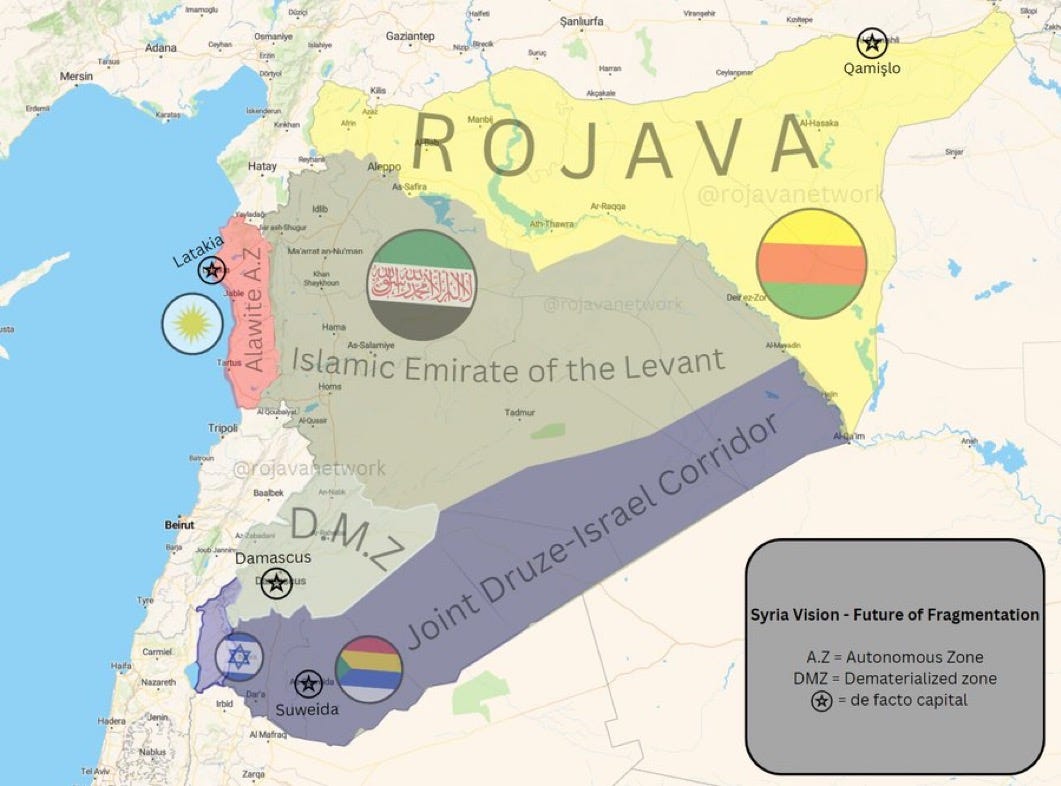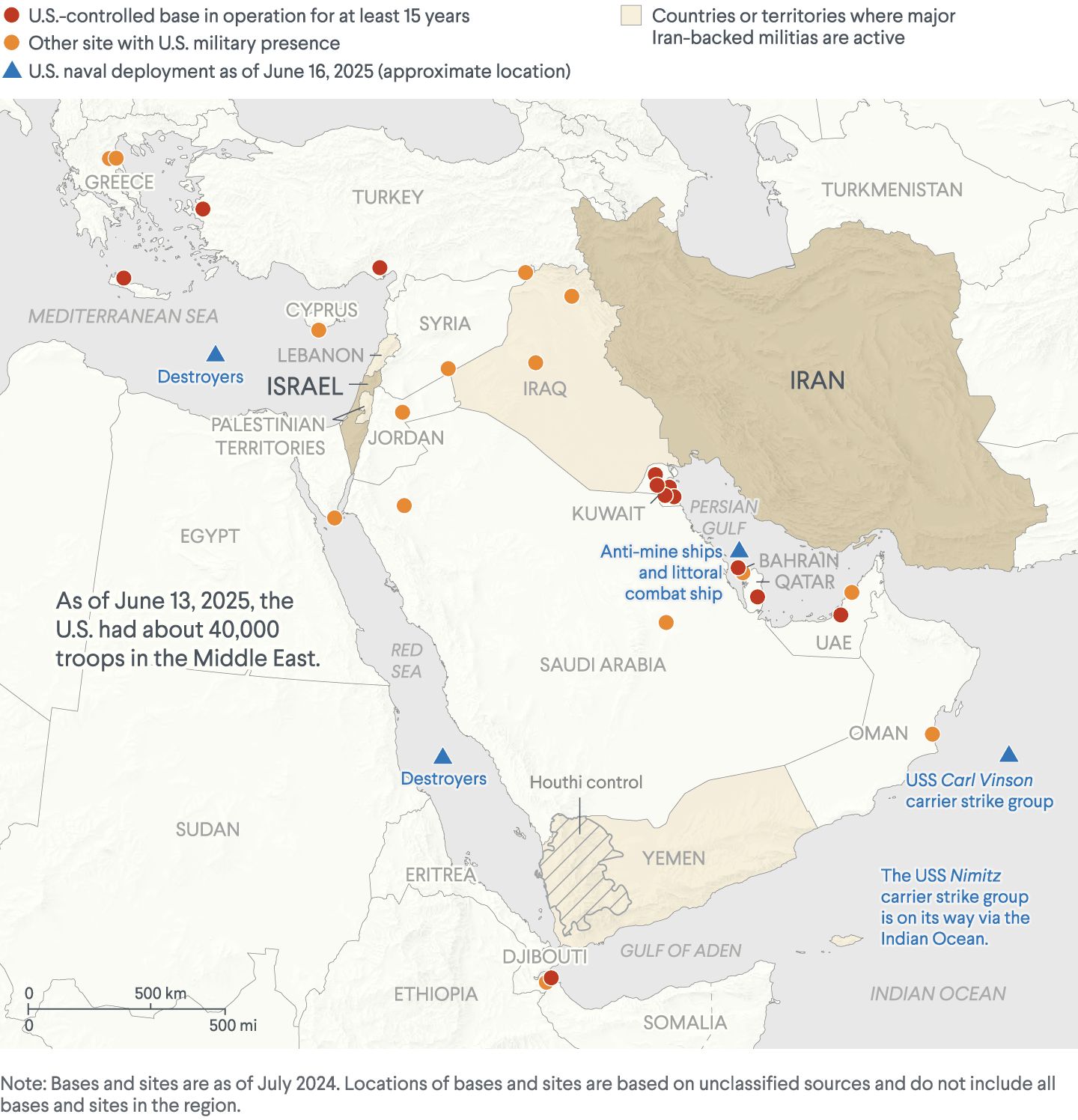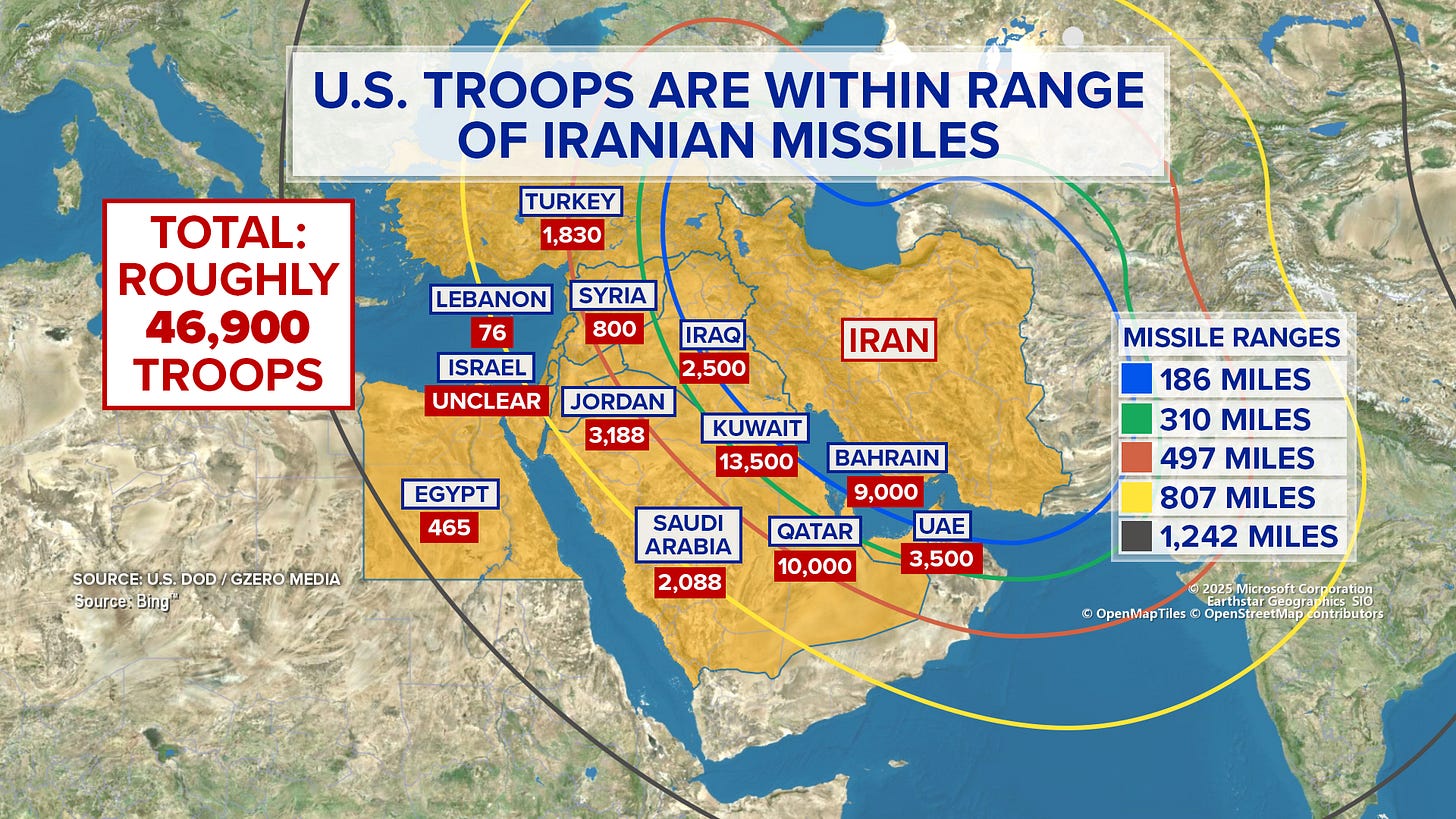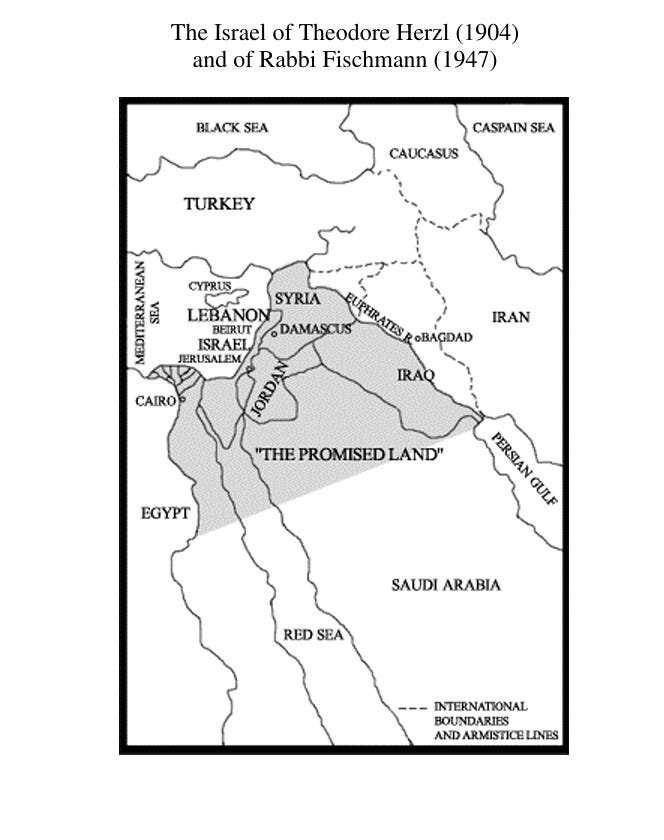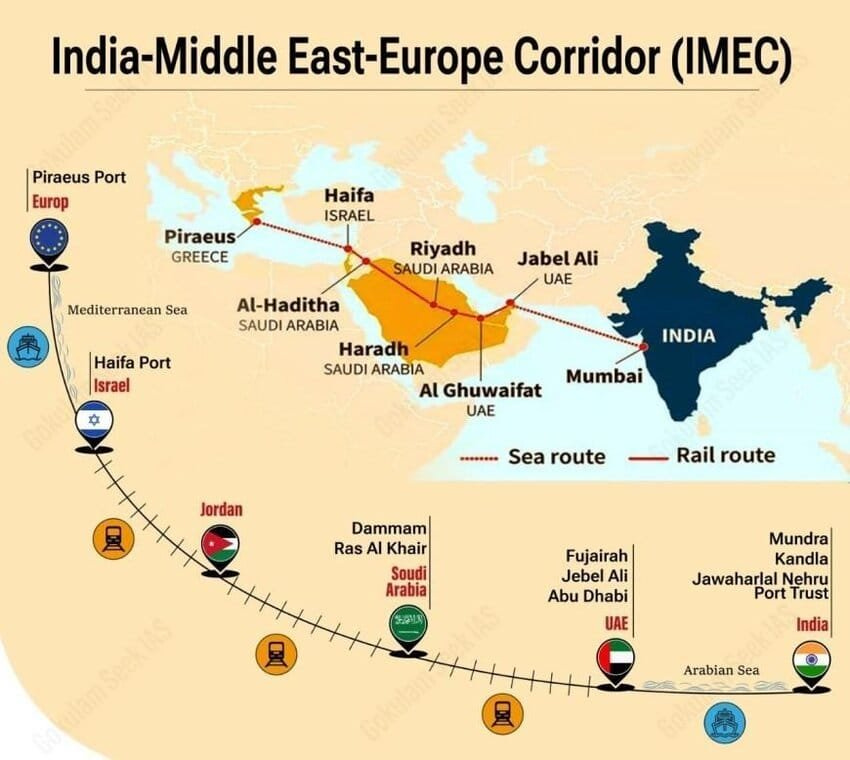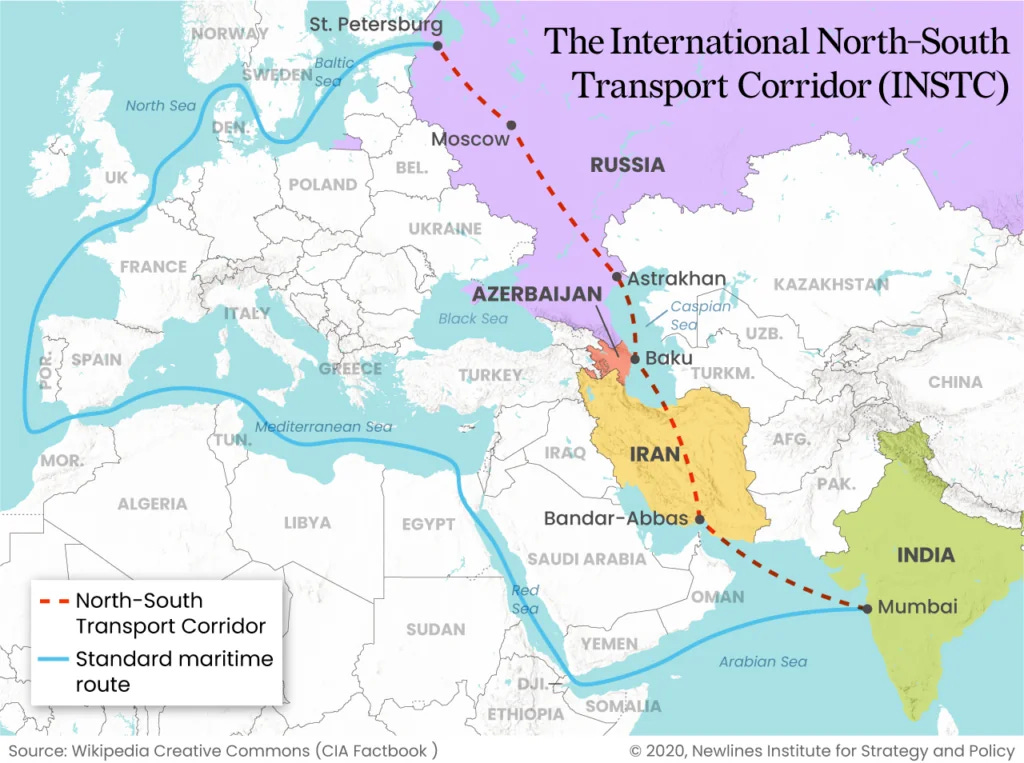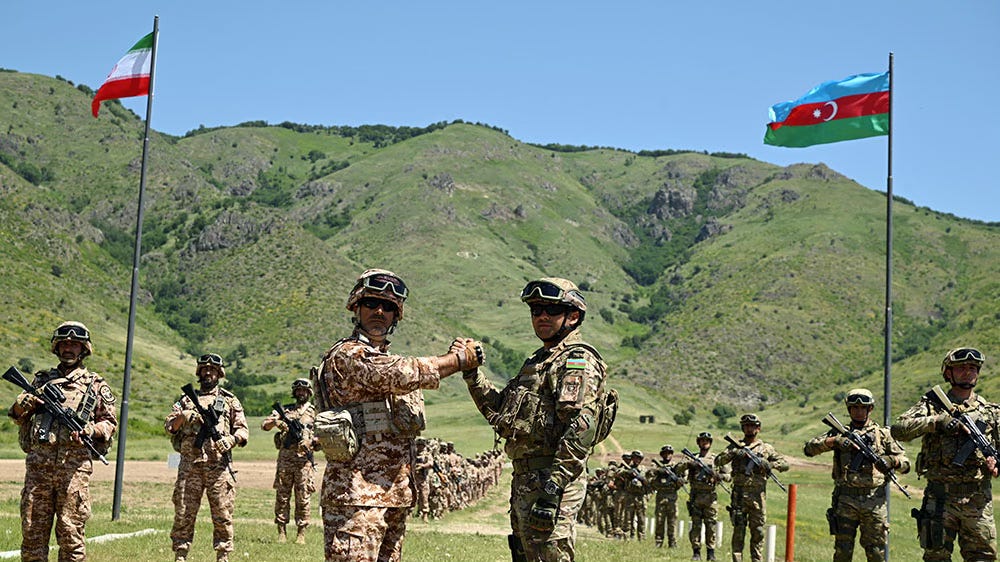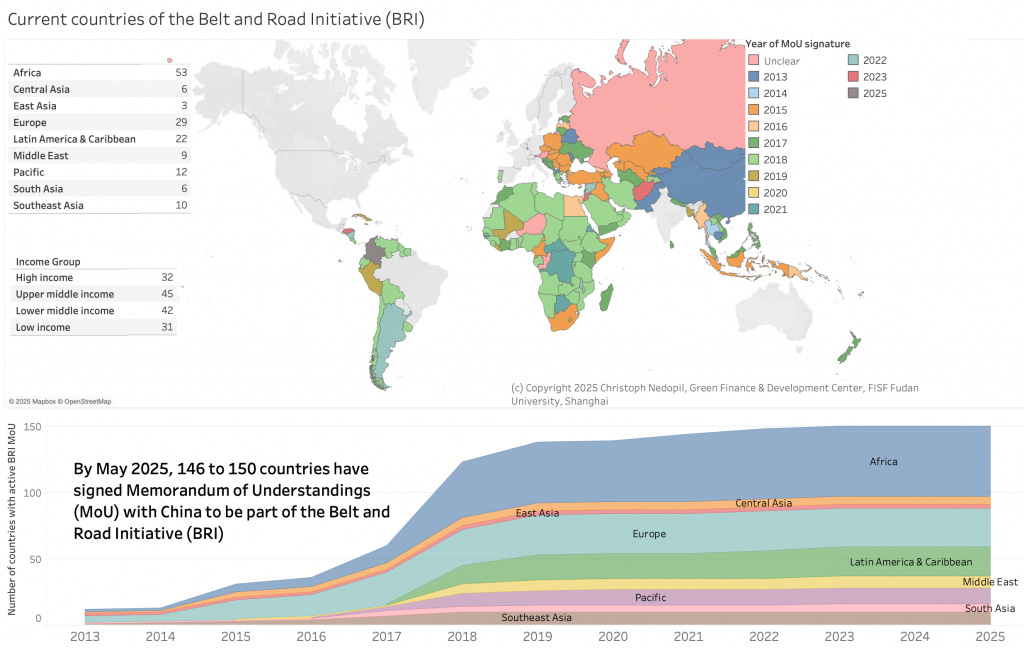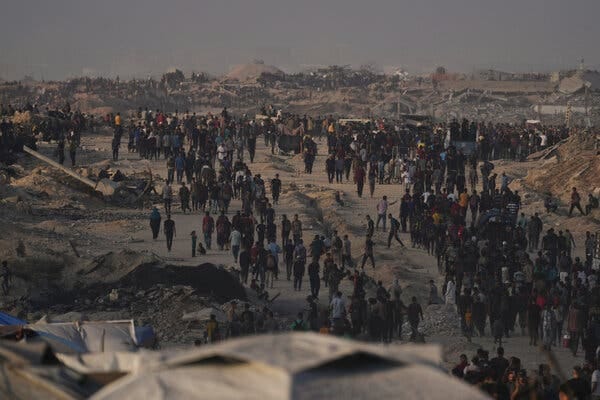In the volatile and rapidly evolving chessboard of global geopolitics, few developments are reshaping the strategic order of West Asia as profoundly and quietly as the emergence of two seemingly unrelated infrastructure projects: the Zangezur Corridor and the David’s Corridor. Following the June 2025 "12-Day War" between Israel and Iran, these corridors have gained urgency as tools for post-conflict encirclement. Though disguised as trade and transport initiatives, these corridors are more than logistical pipelines; they are geopolitical frontlines.
At stake is not merely the redirection of goods and gas, including potentially $50 billion in rerouted Eurasian trade, but the gradual isolation, encirclement, and potential destabilization of the Islamic Republic of Iran.
The corridors, stretching from the South Caucasus through Iraq and the Levant, constitute a new form of infrastructural warfare, creating economic bypasses, embedding military footholds, and reengineering regional alliances. The long-term objective appears clear: to constrict Iran’s influence, disrupt its connectivity to the global East, and create favorable conditions for a potential military confrontation. Iranian officials have repeatedly labeled Zangezur a U.S.-Israeli scheme to sever northern links.
Recent events, including the fragile ceasefire following the June 2025 Israel-Iran "12-Day War," have amplified these corridors' roles. With over 550 Iranian missiles launched and Israeli strikes on nuclear sites, the conflict exposed vulnerabilities in regional logistics, prompting accelerated pushes for bypass routes that further isolate Tehran amid ongoing US sanctions and NATO energy realignments.
The Geopolitical Stakes of Infrastructure
Infrastructure is no longer neutral. Roads, pipelines, railways, and fiber-optic cables are now strategic weapons, tools to project power, isolate adversaries, and dominate chokepoints. Just as sea lanes defined 19th-century empires, and airspace defined 20th-century power projection, land corridors now represent the arteries of 21st-century influence. The 12-Day War highlighted this, with rapid strikes relying on pre-positioned logistics vulnerable to corridor disruptions. This new paradigm is clearest in the growing convergence of economic planning and military positioning in West Asia.
The Zangezur and David’s Corridors function not merely as trade routes but as mechanisms of geopolitical engineering. They bypass, weaken, and rewire existing power centers, chief among them, Iran. NATO's energy diversification efforts further position Zangezur as a bypass for Caspian resources.
The Zangezur Corridor: Cutting Iran Off From the North
Breaking the East-West Land Bridge
The Zangezur Corridor is designed to run through Armenia’s Syunik province, connecting Azerbaijan to its exclave of Nakhchivan and onward to Turkey. This land bridge, negotiated in the wake of the 2020 Nagorno-Karabakh war, is nominally about connectivity. But in strategic terms, it does far more; it severs Iran’s key East-West overland link. As of July 2025, Azerbaijan is nearing completion of its segment, while Armenia has rejected a US proposal to manage the route, amid Iranian warnings of it being a US-Israeli plot to isolate Tehran.

Historically, Iran’s geography has given it unique strategic depth, acting as a transit hub between Central Asia, the Caucasus, and the Levant. The Zangezur Corridor bypasses this. For the first time, a direct East-West connection from Baku to Ankara can function without Iranian or Russian territory.
As of late July 2025, Azerbaijan has advanced its segment toward completion, with projections of 15 million tons annual cargo capacity in the initial phase. Armenia's rejection of a US proposal to manage the route underscores sovereignty tensions, while Iranian officials continue to denounce it as a "geopolitical scheme" orchestrated by the US and Israel to undermine Tehran's security and block its access to Russia and Europe.
Energy Flows and Strategic Rewiring
This corridor is tightly bound to energy strategy. Azerbaijan’s gas exports, particularly to Europe, have gained importance in the context of Western efforts to reduce dependence on Russian energy. By establishing a corridor that sidesteps Iran, energy-rich Central Asia and the Caspian Basin can feed European markets via Turkey. Estimates suggest an initial capacity of 15 million tons of cargo per year, boosting EU diversification post-Ukraine war.
This diminishes Iran’s relevance in major pipeline projects like the Iran-Turkmenistan-Turkey line or even the broader Belt and Road Initiative, which once envisaged Iran as a central node. Tehran becomes a detour, not a destination.
Israeli and NATO Footprint
Beyond economics, the Zangezur Corridor opens a corridor for intelligence and military expansion. Azerbaijan, already a strategic partner of Israel, has permitted extensive Israeli drone operations, surveillance posts, and military infrastructure close to Iran’s northern border. Israel supplies around 60-70% of Azerbaijan's arms, with ties deepening amid the 2025 Israel-Iran war, where Baku allegedly assisted in strikes.
Reports of Israeli military advisors, forward intelligence bases, and even contingency landing zones in Azerbaijan have alarmed Tehran. The corridor may eventually serve as a logistics path for future Israeli or NATO activity aimed at Iran. Tehran views it as a US-Israeli scheme to undermine its security.
In the aftermath of the 2025 conflict, Azerbaijan's alleged logistical support for Israeli operations—coupled with Israel providing 60-70% of Baku's arms arsenal—has heightened Tehran's concerns, positioning the corridor as a potential northern vector for future hybrid threats, including cyber and drone incursions.
David’s Corridor: The Western Encroachment
What is David’s Corridor?
While less officially recognized, the term “David’s Corridor” refers to the growing effort to connect Israel to Iraqi Kurdistan via Jordan, Syria, and northern Iraq. This land bridge enables Israel to reach its American allies, military outposts, and intelligence networks in the Kurdistan Region of Iraq, bypassing hostile or unstable terrain. In 2025, amid Syrian chaos and Israeli strikes on Damascus, the corridor has advanced through shadow realignments.
The corridor’s quiet development rests on weakening state sovereignty in Syria and Iraq, fostering fragmentation, and ensuring that no central authority can block its progression. In many ways, the corridor is less a built highway and more a pathway of influence.
Strategic Israeli Access
The U.S. military maintains bases in both Jordan and Iraq. Through the David’s Corridor, Israel potentially secures a land route to these installations, which would be critical in any future confrontation with Iran. This corridor would allow for rapid movement of troops, missile systems, and electronic warfare units without the need to rely on air corridors that might be contested. US troops, numbering 40,000-50,000 across the Middle East, hold positions at Kurdistan's Hareer base despite Iraq drawdowns.
It also establishes a forward base in Iraqi Kurdistan, already a site of joint U.S.-Israeli intelligence operations and a region outside Baghdad’s full control.
Destabilizing the Levant
The realization of this corridor hinges on one core principle: the permanent weakening of Syria and Iraq as unified states. Fragmented, sectarian, or war-torn territories are more amenable to corridor construction than stable nation-states with strong institutions.
In Syria, the U.S. and its allies continue to exploit internal divisions by supporting armed factions like Hay’at Tahrir al-Sham (formerly al-Qaeda affiliate Jabhat al-Nusra) and manipulating minority dynamics, fueling long-term instability. In Iraq, Erbil’s alignment with Washington and Tel Aviv, rather than Baghdad or Tehran, further fragments national authority.
This deliberate decentralization fosters the conditions necessary for corridor advancement with minimal state oversight or accountability.
By mid-2025, Israeli strikes in Damascus and the Golan Heights have been linked to securing this pathway, while US forces, estimated at 40,000-50,000 across the Middle East, maintain key positions in Iraqi Kurdistan's Hareer base, facilitating joint operations despite Baghdad's calls for drawdowns. This has fueled regional alarm over Israel's "shadow project" to redraw the Levant through controlled instability.
The Ben Gurion Canal: Strategic Lifeline Beneath the Sand
At the heart of the David’s Corridor lies a much deeper and more ambitious vision, one that could redefine global maritime trade and shift the balance of power between East and West. This is the Ben Gurion Canal, a proposed megaproject that, if realized, would function as a rival to Egypt’s Suez Canal and serve as a linchpin in American and Israeli strategy for the 21st century.
The concept, long dismissed as a geopolitical fantasy, has gained new relevance in the wake of shifting global alliances, the Belt and Road Initiative, and the increasing chokepoint vulnerability of the Suez. The Ben Gurion Canal is envisioned to cut across the Negev Desert, from the Gulf of Aqaba (Eilat) to the Mediterranean Sea, bypassing Egypt and providing an alternative maritime route for global shipping. But to be protected, supplied, and made geopolitically viable, the David’s Corridor must precede it, acting as both a security buffer and logistical backbone. Speculation has intensified post the 12-Day War and Gaza's devastation, with some viewing the destruction as enabling canal extensions through fragmented territories.
A Canal Through Occupation
The proposed route of the Ben Gurion Canal lies entirely within territory controlled by Israel, cutting from the Gulf of Aqaba (Eilat) across the Negev Desert to the Mediterranean Sea. While the canal itself does not cross into neighboring countries, its viability depends on a surrounding security and logistics network—namely, the David’s Corridor—which provides land connectivity to the Gulf and beyond. This positions the canal within a wider regional matrix of instability, linking it indirectly to volatile zones in Jordan, Syria, and Iraq.
For such a high-value project to be built and sustained, it requires a militarized shield—a stable and cooperative corridor that guarantees American and Israeli access from the Mediterranean through to the Arabian Peninsula. This is the David’s Corridor.
Without this land bridge, the Ben Gurion Canal would remain a sitting target: vulnerable to insurgents, regional powers like Iran, or a future shift in Arab public sentiment. The corridor must ensure not just territorial access, but operational dominance across a region currently defined by contested sovereignties.
Economic Containment and the U.S.-China Equation
The strategic value of the Ben Gurion Canal does not stop at regional logistics. It is part of a larger project to rebalance global trade flows in a way that curbs China’s influence. The current global trade architecture allows China to dominate East-West shipping via the South China Sea, Malacca Strait, Indian Ocean, and the Suez Canal.
With Chinese-controlled or -influenced port infrastructure stretching from Gwadar (Pakistan) to Djibouti and through Egypt’s Suez Canal (via major investments), the U.S. finds itself at a maritime disadvantage. The Ben Gurion Canal, especially when backed by the David’s Corridor and GCC cooperation, would give the U.S. and Israel a new logistical artery, outside Chinese influence and secured by American-aligned military presence.
It also becomes a potential tool of economic coercion. In any future U.S.-China escalation, Washington could route sensitive or critical shipments through this canal, effectively circumventing Egyptian, Turkish, and potentially even European pressure.
The Gulf Connection: GCC as Economic Engine and Security Partner
For the canal to be viable, its eastern terminal must link with economically dynamic, resource-rich, and politically cooperative states… the GCC. Hence the growing U.S.-Israeli push to integrate Gulf states not just diplomatically (as seen in the Abraham Accords/Abraham Shield) but logistically and militarily into a new corridor architecture. In 2025, Accords expansions have deepened infrastructure ties amid post-war realignments.
This is where the David’s Corridor becomes crucial again. Without direct land connectivity to the Gulf, any canal becomes an isolated project. By establishing control over routes through Jordan, Syria, and western Iraq, regions where state authority is weak or fragmented, the corridor allows goods, energy, and military forces to move seamlessly from the Mediterranean to the Gulf and vice versa.
Already, Israeli-Gulf economic coordination is expanding, from infrastructure projects to intelligence sharing and cyber defense. The canal would cement this partnership, giving Gulf states an alternative to Egyptian control, and giving Israel a backdoor into Asia via the Gulf.
Canal Protection Through Permanent Instability
Just as the David’s Corridor thrives on fragmentation, so too does the Ben Gurion Canal project rely on the absence of unified, sovereign Arab opposition. A strong Syria would never allow such a project to threaten its regional relevance. An Iraq with restored sovereignty and autonomy from U.S. bases would resist the militarization of its western regions. A Palestinian state with full rights would not allow Israeli control over canal chokepoints
Thus, the long-term destabilization of Syria and Iraq becomes not a side effect but a prerequisite. By undermining state institutions, fueling sectarian and ethnic divisions, and creating zones of foreign influence, the corridor enables the canal, and the canal, in turn, necessitates the corridor.
This is infrastructural imperialism at its most refined: the war is not fought to take territory, but to make corridor-dependent infrastructure viable in enemy territory.
The Iran Angle: A Canal that Encircles
The canal, combined with the David’s and Zangezur Corridors, forms a crescent of encirclement around Iran. To the north, Azerbaijan and Israeli military infrastructure form the upper blade of the pincer. To the west, the David’s Corridor opens up a path for ground invasion or insurgency support. To the south, U.S. naval dominance in the Persian Gulf remains a constant. And now, with a canal cutting just west of Iran’s sphere, Tehran risks seeing its entire geostrategic depth erased.
Even if Tehran remains untouched militarily, its economic relevance in trade corridors will be nullified. With the canal in operation, much of East-West shipping would no longer need Iranian ports or cooperation, further isolating Iran from both China and Europe.
The Canal as Global Signal
If completed, the Ben Gurion Canal would not only reroute ships; it would reroute geopolitics. It would send a message that American and Israeli infrastructural supremacy can outmaneuver geography, sovereign borders, and even public opposition.
It would reorient the Middle East away from pan-Arab or Islamic solidarity and toward a fragmented map of special zones and militarized corridors, controlled by Western-aligned actors.
More importantly, it would be a strike at the heart of China’s Silk Road strategy. If the U.S. can secure and dominate a new intercontinental maritime and land route, then it can restore a balance of power that currently favors Beijing.
Speculation in 2025 has surged amid Gaza's devastation, with the proposed $55-77 billion canal viewed as a counter to Egypt's Suez dominance and a component of the India-Middle East-Europe Corridor (IMEC). If advanced, it could handle up to 20% of East-West shipping, but relies on sustained fragmentation in Palestine, Syria, and Iraq to mitigate vulnerabilities from Iran-backed groups.
Infrastructure as Pre-War Positioning
Both the Zangezur and David’s Corridors serve dual-use purposes: they are commercial pipelines and potential military highways. The current build-up is not dissimilar to Cold War-era logistics corridors, like NATO’s Fulda Gap or the U.S. Trans-Siberian defense simulations. These corridors enable rapid response, deep penetration, and sustained occupation in hostile environments. The 12-Day War underscored this, with reports of Azerbaijan's role in facilitating Israeli strikes highlighting corridors' military potential.
Zangezur: Prepping the Northern Front
If war were to erupt between Iran and its adversaries, particularly Israel or NATO, Azerbaijan would likely become the northern staging ground. The Zangezur Corridor would enable the rapid deployment of military personnel, drones, and logistical support from Turkey and Israel into areas adjacent to Iranian Azerbaijan, one of Iran’s most sensitive regions ethnically and militarily. Post the 12-Day War, deepened Israel-Azerbaijan ties, including arms supplies, have amplified this threat, per Iranian claims.
David’s Corridor: Threatening the Western Flank
Iran’s western provinces including Kermanshah and Khuzestan, host critical infrastructure and population centers. The David’s Corridor opens a potential axis for military penetration from Iraq into these areas. In a full-scale conflict, Israeli or American forces could use this corridor to destabilize Iran’s western flank while also supporting Kurdish separatist forces. Recent US calls to fortify bases in Kurdish Iraq amid drone threats further enable this.
Encirclement in Slow Motion
These corridors are not separate threads, they form a noose.
The broader strategy appears to follow a doctrine of gradual encirclement:
To the north, Azerbaijan acts as a forward operating base, with Israeli drone fields and intelligence listening posts just kilometers from Iranian borders.
To the west, Kurdistan serves as an unregulated zone where Western powers operate freely without needing the approval of Baghdad.
To the south, U.S. forces remain in the Persian Gulf, flanking Iran’s maritime access.
To the east, Afghanistan’s chaos prevents eastward expansion or full regional integration.
Meanwhile, attempts to destabilize Iranian border regions from Balochistan to Iranian Kurdistan are likely tied to the logic of softening Iran’s periphery for future corridor deployment or insurgent infiltration.
The 12-Day War's fallout has refined this encirclement: Iran's missile barrages tested defenses but failed to deter corridor advancements, while Israel's rapid resupply via allied routes demonstrated the highways' pre-war value. Analysts note this as a shift toward "infrastructural deterrence," where control over land bridges could enable sustained operations in future escalations.
Tehran’s Response and the Great Rebalancing
Iran is not blind to these developments. Military drills along the Azerbaijani border in 2025, increased defense cooperation with Armenia, and Tehran’s efforts to deepen its alignment with Russia and China are all part of acounter-containment strategy. Recent joint exercises include the Aras-2025 drill with Azerbaijan in May and drills with Armenia in April, reflecting complex border diplomacy amid tensions.
North-South Transport Corridor
Iran, Russia, and India continue to promote the NSTC, a multimodal trade route designed to connect India to Russia via Iran and the Caspian Sea. This serves both economic and strategic functions, but its effectiveness is hampered by sanctions and regional instability. Progress in 2025 includes the start of Rasht-Astara railway construction in May and trade turnover exceeding $4 billion between Iran and Russia.
Eastward Alternatives
Iran has also sought to deepen ties with Central Asia and Afghanistan, trying to build eastward corridors into China through cooperation with Pakistan and Central Asian republics. But these are vulnerable to Taliban instability, U.S. pressure on Pakistan, and Chinese caution. In 2025, the Chabahar-Zahedan line was completed, with extensions toward Afghanistan and CPEC integrations underway to bolster connectivity.
Defense Diplomacy
Iran has responded militarily by:
Deploying missile batteries along the northern frontier.
Increasing air defense drills near Khuzestan and Kurdistan. This includes nationwide drills in January 2025 simulating defense of Natanz and heightened preparations post the 12-Day War.
Tehran’s view is clear: it faces a creeping encirclement via infrastructure and proxy, and it must prepare not just for deterrence, but for potential preemptive conflict.
Recent enhancements include the May 2025 launch of a new commercial railway linking China to Iran, bypassing sanctions, and balancing deterrence with diplomacy. Air defense simulations near Natanz in January 2025 further prepare for multi-front threats.
The Global Context: Corridor War as World War Contingency
These developments don’t exist in a vacuum. As U.S.-China rivalry intensifies, and as Russia faces prolonged isolation, Iran becomes a key node in the emerging multipolar world order. But this also makes it a target. In 2025, corridor wars have escalated as a proxy arena in US-China competition, with Iran emerging as a fault line amid the 12-Day War's fallout and Beijing's balancing act between Tehran and Tel Aviv.
By July 2025, amid intensified US-China competition, these corridors serve as proxy arenas: Beijing's caution in balancing ties with Tehran and Tel Aviv contrasts with Washington's push for energy independence, positioning Iran as a fault line in emerging blocs.
Who Controls the Corridors Controls the Future
China’s Belt and Road Initiative, once envisioned with Iran as a core node, now finds itself restructured. With China investing heavily in Central Asian and Caucasian routes that avoid Iran, and with Israeli ties to Baku and Erbil growing, Tehran risks being bypassed. Despite launching a new commercial railway to Iran in May 2025 to bypass sanctions, the Zangezur and David's Corridors threaten to divert Eurasian trade, forcing further adaptations.
At the same time, Israel and the U.S. view Iran not just as a nuclear threat, but as the lynchpin of an emerging anti-Western bloc including Syria, Hezbollah and Ansar-Allah. Cutting its trade routes and opening multiple fronts may become part of a containment doctrine under a future regional war scenario. Post the 12-Day War, this perspective has intensified, with Iran seen as central to Russia-China alignments.
A War Being Built One Corridor at a Time
The Zangezur and David’s Corridors are not about highways and trade zones; they are tools of strategic warfare. Through them, global powers are reshaping the map of West Asia. As these corridors expand, Iran’s maneuverability shrinks. The 12-Day War has accelerated this dynamic, heightening the stakes in infrastructural encirclement. We are witnessing a war not of bullets, but of asphalt and fiber optics, not of tanks, but of terminals and pipelines.
As corridors solidify, potential flashpoints include renewed Zangezur negotiations or Syrian escalations, where a single blockade could ignite broader conflict. The Ben Gurion Canal's shadow looms, promising economic boons but at the cost of perpetual instability.
Whether the shooting starts tomorrow or ten years from now, the battleground is being paved today.
